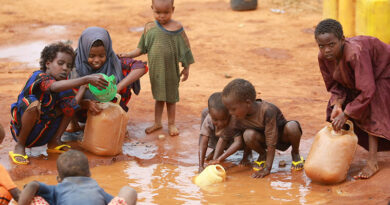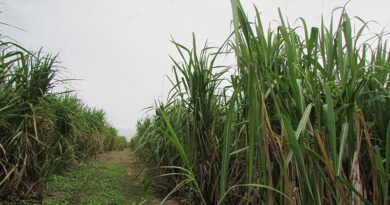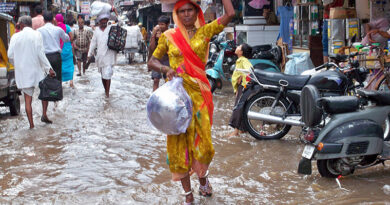Half of global GDP could come from areas facing high water risk by 2050

With climate change worsening world’s water crises, forward-looking scenarios produced by the WWF report estimate that almost half of global GDP could come from areas facing high water risk by 2050. While 17 per cent of the global population and 10 per cent of the world’s GDP currently come from regions of high-water risk, by 2050 this could increase to 51 per cent and 46 per cent respectively.
The WWF Water Risk Filter that assesses, values and responds to water risk has a new functionality that maps three scenarios (optimistic, current trend and pessimistic) for 2030 and 2050 designed to help companies and investors better understand future water risks and drive more effective corporate action on climate and water resilience.
With water stress increasing due to climate change and soaring demand for water from expanding populations, urbanisation and economic development, companies and investors are increasingly concerned about how water risks may potentially impact their operations, supply chains and investments – now and in the future. As the timing and magnitude of future water risks due to climate change and socio-economic factors are highly uncertain, it is challenging for companies and investors to understand potential risks and opportunities for their businesses or investments in order to ensure long-term resilience.
“Companies are finally waking up to growing water risks and the need to take urgent action to reduce their risks and tackle shared water challenges,” said WWF Water Risk Filter Lead Ariane Laporte-Bisquit.
“By harnessing the new scenarios in the Water Risk Filter tool, companies and investors can better assess, respond and plan for climate and water resilience”.
Based on climate and socio-economic changes, the scenarios are aligned with the Task Force on Climate-related Financial Disclosure (TCFD) recommendations. Given high uncertainty in the context of climate change, TCFD recommends companies and financial institutions apply scenario analysis for assessing climate-related risks and opportunities to determine business resilience. As the impacts of climate change will primarily be felt through water, it is critical for scenario analysis to incorporate water in a comprehensive manner.
“Climate-related risks and opportunities are undeniably intertwined with those associated with water. Any assessments of future water-related events should therefore consider the climate, but this is only one piece of the puzzle. Other socio-economic drivers impact the supply and demand of water, such as regulatory, market and demographic changes. The new WWF Water Risk Filter tool supports the integration of water into TCFD-aligned scenario analysis and will strengthen the disclosure and assessment of companies’ resilience to future scenarios,” said Environmental Specialist (Technical Manager) at Climate Disclosure Standards Board (CDSB) Francesca Recanati.
While freshwater is a major conduit through which climate impacts are felt, it can also play a central role in climate adaptation and resilience. However, the greater the change in risk (i.e., the difference between today and future risk), the greater the challenge for adaptation. Therefore, it is critical to identify the sites and assets projected to face the greatest increase in risk and focus resilience efforts in those places, especially for material parts of the value chain, the report recommends.



